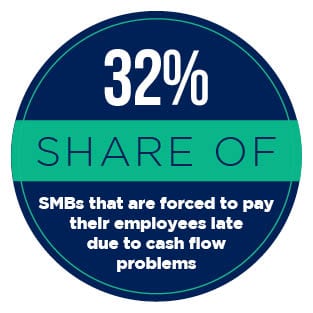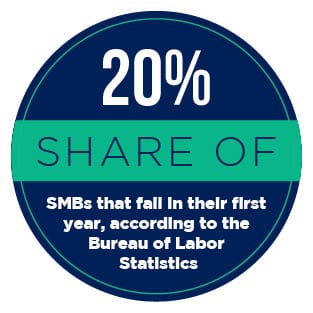Spend Solutions That Drive Delivery’s Last Mile


Cash flow is the lifeblood for many small- to mid-sized businesses (SMBs). Without it, many SMBs wouldn’t be able to cover their expenses, settle debts with suppliers or pay their employees for their work. Unfortunately, cash flow problems can be too much for some SMBs to bear. According to the latest findings from the Bureau of Labor Statistics (BLS), 20 percent of SMBs shutter within their first year of operation.
Given the high stakes involved, SMBs face significant pressure to make each dollar count. This can be an especially tall order for SMBs that rely on a team of field-based workers. These firms must frequently dispatch technicians and specialists — including plumbers, roofers, electricians and other professionals — to address customers’ needs. So, how can SMBs ensure that workers’ time and the company’s money is spent as efficiently as possible? The new Workforce Spend Playbook highlights the lat est spend management tools, expense cards and workforce management solutions that are helping SMBs and their field-based staff to maximize efficiency on the front-lines of service and on the back-end of accounting.
est spend management tools, expense cards and workforce management solutions that are helping SMBs and their field-based staff to maximize efficiency on the front-lines of service and on the back-end of accounting.
Around the Workforce Spend World
A new solution could help more SMBs transition away from using paper check to digital alternatives.
The new service from Bento for Business aims to help U.S. SMBs make and receive payments more securely. The company estimates that 80 percent of SMBs use paper checks for payments. The solution enables users to send and receive payments using personal identifiers such as email addresses. Payments can be received using ACH payments deposited directly into their checking accounts.
Other spen d management solutions are focused on helping public sectors like the education market. Investment bank J.P. Morgan recently collaborated with spend management solution provider JAGGAER on a new solution for education, public and commercial industries. Under the terms of the deal, JAGGAER will provide a virtual commercial card that can integrate with the JAGGAER One spend management platform, enabling users to streamline purchasing processes. The solutions to help users in these markets reduce costs and improve purchasing oversights.
d management solutions are focused on helping public sectors like the education market. Investment bank J.P. Morgan recently collaborated with spend management solution provider JAGGAER on a new solution for education, public and commercial industries. Under the terms of the deal, JAGGAER will provide a virtual commercial card that can integrate with the JAGGAER One spend management platform, enabling users to streamline purchasing processes. The solutions to help users in these markets reduce costs and improve purchasing oversights.
Enhanced purchasing is the reason why Ohio’s Kent State University recently announced that its purchasing department will be using JAGGAER’s solution. Kent State belongs to a consortium of state purchasing officers from 87 public higher education institutions that aims to use standardization to find discounts on purchases. This membership status enables Kent State to access several JAGGAER services including procure to pay, sourcing supplier management and contract lifecycle management features.
Deep Dive: Helping Field-Based Workers Focus On Work
The number of workers who hold field-based jobs is on track to grow substantially, according to the latest BLS projections. Several new spend and workforce management solutions are emerging that can help these workers remain efficient on the job and access predictive maintenanc e capabilities for longer-term planning. The inaugural Playbook features a Deep Dive that highlights how spend management and enterprise resource planning (ERP) solutions are integrating to address some common pain points of field-based workers.
e capabilities for longer-term planning. The inaugural Playbook features a Deep Dive that highlights how spend management and enterprise resource planning (ERP) solutions are integrating to address some common pain points of field-based workers.
Feeding Delivery Drivers’ Appetite For Spend Management
One of the most common pain points for field-based workers, however, is having to wait days or weeks to get reimbursed for out-of-pocket purchases made on the job, such a fuel. If workers do not get paid in a timely fashion, they could become dissatisfied with their employer or risk their financial footing. In the Feature Story, Megan Morki, CEO of Byte Technology, explains how spend management tools help keep delivery drivers for the company’s Byte Foods division from incurring debt on behalf of the company.
About the Playbook
The new Workforce Spend Playbook, a PYMNTS and Bento for Business collaboration, showcases the shifting spend management solutions landscape and how improved services are affecting SMBs’ in-field expense management, back-office operations and bottom lines.